What shape web does a spider spin in space?
Can spiders weave webs in microgravity? Can shampooing cause hair loss? How much brain do we use at once? Can a person survive on raw food alone? This week we're answering your science questions, plus news of the IgNobel prize for research into 'hairodynamics' and a way to wipe out bad memories...
In this episode
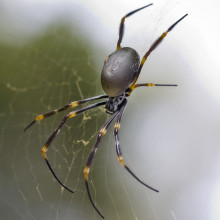
What shape would a spider web be in space?
Chris - Ooh! That's a hard one. Dave, what do you think?
Dave - I don't know.
Chris - In space, there is microgravity.
Dave - There's almost no gravity. There's nothing to get the spider to align itself but I don't know whether a spider is aligning to gravity or whether it's doing it visually.
Chris - Kat, your perspective?
Kat - I reckon, it might struggle, because they kind of fling themselves around to make their webs, so I think it might struggle with that. And also, I remember the study where they gave spiders different drugs and saw the effect on their webs, so I wonder what would be the effect of spiders on drugs in space as well?
Chris - Okay, so you answered the question with another one. Well I'm pleased to say, Alan Boyd who's working with us at the moment as one of our interns, found a wonderful paper, which is actually doing this. NASA did this experiment aboard Endeavour, the penultimate space mission using the shuttle. It went up last May and I've got a little write-up which is in Wired magazine so I'll just quote from this...
"A pair of golden orb spiders called Gladys and Esmerelda were shot into space on Endeavour in May. The experiment was part of a K-12 curriculum which, when school is back in session, will let students compare the behaviour of spiders kept in the classroom as well as spidernauts (as they're dubbing them)." They say, "On Earth, these spiders which are Nephila clavipes, generally spin large, circular webs, and they actually make webs that look like they have been chopped off at the top." So they are horizontal across the top. "When they spun the webs in space, the spider's webs ended up completely circular. The spiders, which use gravity to orient themselves seem unsure about which way to face at times, say researchers at the University of Colorado at Boulder, who were behind this study. Golden orb spiders normally use gravity when building the long lines that radiate from the web's centre - occasionally letting go to drop to the ground. But when she lets go, Esmerelda (that's one of the spiders) doesn't have gravity to bring her down, so she just floats about instead of dropping." So, I think, Stuart, the answer is that the pictures they've got on this article and from NASA's own website shows spiders that do seem to make quite good webs except they're very much circular. They don't have that horizontal across the top, so the spider appears to be able to compensate for the absence of gravity and still orientates itself.
Stuart - How interesting. Obviously, it's an odd one because it's a very 2D-shaped and obviously now, I'm thinking of 3D shapes in space, like cocoons and things. I wonder if there would be other animals that would maybe struggle. I was thinking of the whole "caterpillar to butterfly phase" when they create the cocoon, I wonder whether they would struggle with that because if they are using gravity obviously to return themselves on that downward loop. If they can't do that, I wonder what strange shapes they would produce.
Chris - Dave?
Dave - I guess it depends whether gravity has a big effect on how they're growing because quite a lot of this sort of thing will be to do with chemical signals and electromagnetic forces. I don't know how much gravity is important in embryology and things like that.
Chris - Certainly, NASA did do a very nice experiment a few years back looking at how plants grow in space because one of the big questions is, when you plant a seed, why does the root always grow downwards and the shoots goes upwards? How does the plant know what's down? And it was an experiment done on the space shuttle that in fact proved it, it was on the Columbia mission, unfortunately, the one that crashed, but experiment survived, and they managed to get it from the wreckage. It revealed that in fact, in plant cells, what you've got are lots of tiny grains of starch bobbing around inside the cell. Under the influence of gravity, they settle inside the cell and as they settle, they push on a structure called the cytoskeleton, which is a fine network of threads and connective tissue inside the cell that holds the cell together. And the cell can sense this, so it knows what direction is downwards, and grown in space, moss, instead of growing in one direction, it grew in a funny spiral because it didn't have that so-called geotropism.

Can shampoo increase hair loss?
Kat - Well, this is an interesting one and it's important to know that we all lose quite a lot of hair every day. We all lose around about 100 hairs every day, which sounds quite scary. But obviously, we have a lot, so that's alright. The other thing is that pretty much everyone uses shampoo. An awful lot of people use shampoo and most people don't seem to lose loads and loads of hair.
Probably the most strong argument I think is that the actual act of shampooing, building it up into a lather, you might be rubbing your head more vigorously, so you're actually just dislodging hairs that are on their way out or have fallen out, and are just kind of stuck in your hair. So, in fact, you're not losing more hair, you're just washing them out more effectively.
There is some argument that maybe some of the chemicals in certain types of shampoo, for particular people might damage their hair and cause it to fall out. But that tends to be a personal reaction to an individual shampoo, so switching your shampoo might help with that. My money's actually on the act of lathering up, just dislodging hairs that are coming out anyway.

Train Tracks - how trains go round corners
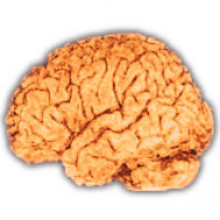
How much of the brain do we use?
Ginny - Well, the short answer is, no. Basically, our brain is a really, really expensive organ. It takes a lot of energy to run a brain and it just wouldn't be evolutionarily sensible to keep expanding all these energy on a brain, if we weren't using most of it. Actually, we tend to see the phrase "use it or lose it" in terms of brain activity in neurons, which basically means that the more you use an area of the brain, the bigger it gets, the stronger it gets, the more neuronal connections you get. And actually, if you stop using that area, it will get taken over by something else that you're using more.

Could humans survive on a raw food diet?
Kat - This is an interesting one, because human beings have evolved to digest food as we've evolved the use of cookery. So from the development of fire, we humans have evolved, and we've evolved cooking skills along with that.
It is possible to survive on a raw food diet, but there are some health risks associated with it. Some of the studies that have been done on people who have lived on raw food diets for a long time have shown that they tend to be underweight, so there's a risk of just not getting enough calories in you. Particularly for women, there's also a risk of osteoporosis, and not getting enough minerals and vitamins to make healthy bones. Again, with women, they can have no periods or irregular periods, so that can be a problem. There's a big risk, actually, of food poisoning. One of the most important things that cooking something does is gets rid of the bacteria in it, so there is an increased risk of things like gastroenteritis and food poisoning from eating a lot of raw foods, particularly things like raw milk. But even salad vegetables, we know that things like E.coli outbreaks can be on salad vegetables.
Chris - But what about - I went to Leon and had steak tartare a few years back, and very nice it was too, that's just raw meat, but it's still meat. I don't think there's any benefit from cooking that apart from the one you mentioned about the fact that you're going to kill any bugs in it. And what about people from Japan, for instance, who eat enormous amounts of raw fish?
Kat - Well there are certainly a lot of raw foods that you can eat that will be perfectly good for you. Some of the people who go for raw food diets are also vegetarian, so they'll say "I don't want to eat anything from animals", or even vegans, which is really tough, I should imagine...
Chris - They don't want to eat a vegan?
Kat - No! They don't want to eat anything from animals at all, so they would be vegans themselves. Eating vegans, if they're raw, would be part of a raw food diet, I'm sure. You can eat some raw meats, you can certainly eat some raw fish and fruits, nuts, grains, vegetables, and all of these kinds of things, if you eat them raw, would be part of a raw food diet. So there are some health risks attached to it, but people can certainly survive on it, yes.
Dave - I don't know whether the original quote might have meant that if people lived on a normal diet, but didn't cook it, they wouldn't last for three months, because you need higher quality food and you've got to eat more of it.
Kat - I think you do have to think quite hard about it if you're going to take up a diet like that.
Chris - So we're giving it the official "thumbs down", are we? Are we saying it probably is more myth than fact?
Kat - Yes, I think you can definitely survive on a raw food diet, as long as it's the right kind of raw food diet.

11:55 - Wiping out fearful memories
Wiping out fearful memories
Stressful and scary situations such as war or accidents leave fearful memories imprinted in our brains. As these memories surface again they can cause big problems for people in the form of conditions such as post-traumatic stress disorder, or PTSD. Writing in the journal Science this week, Thomas Agren and his colleagues at Uppsala University in Sweden have taken a big step forward in understanding how fearful memories get processed in the brain, which could potentially lead to new ways to tackle the problems they cause.
 This new paper builds on a lot of previous research that's been done in rodents, which showed that you could erase fearful memories in these animals. But now the team have looked in detail at fear memories in humans. The key lies in understanding how the brain processes fear memories after a scary event, and particularly what happens when a fearful memory resurfaces - for example, a soldier having a flashback to a bomb attack. At this point the brain can change the memory, before it's stored again, which is a process called reconsolidation. And this seems to be a crucial time for intervening to actually erase the memory, getting rid of it for good.
This new paper builds on a lot of previous research that's been done in rodents, which showed that you could erase fearful memories in these animals. But now the team have looked in detail at fear memories in humans. The key lies in understanding how the brain processes fear memories after a scary event, and particularly what happens when a fearful memory resurfaces - for example, a soldier having a flashback to a bomb attack. At this point the brain can change the memory, before it's stored again, which is a process called reconsolidation. And this seems to be a crucial time for intervening to actually erase the memory, getting rid of it for good.
The scientists used a well-established psychology technique to give people fearful memories, called fear conditioning. They showed 22 volunteers an image on a computer screen and gave them a mild electric shock. The next day, they showed the image to them again without giving them a shock, and found it triggered a fearful memory of the previous day's shock, as measured by changes in their behaviour as well as nervous reactions such as sweating. This reactivation of the memory is the reconsolidation I mentioned earlier.
The researchers then split the group of volunteers in half. For one half, they repeatedly showed them the image just 10 minutes after they had reactivated their fear memory - what they call extinction treatment. This is still within the time period when the brain is reconsolidating the memory. For the other half, they showed them the image again 6 hours later, outside the reconsolidation window. They found that for the first group, they had stopped associating the image with the fearful memory - it had effectively been wiped out. But for the group who got this treatment 6 hours later, they still had a fear response to the image.
The researchers think that a part of the brain called the amygdala is responsible for storing and recalling fear memories - to test this they brought the volunteers back three days later and put them in a brain scanner, then showed them the same trigger image. The group that had been given the extinction treatment six hours later showed activity in their amygdalas linked to the fear memory, but no similar activity was seen in the group who got the treatment just ten minutes later.
At the moment this is a very small study, using highly artificial conditions. But the researchers have shown that they can intervene during reconsolidation of fearful memories, and that this can help to get rid of them. Although we're a long way from having a technique that doctors can use, it's the first time that this kind of approach has been shown to work in people, so an important step in the right direction.

Why isn't rain salty?
Chris - The answer is that the Sun puts energy onto the Earth's surface and that includes the ocean surface, and every square metre gets energy at the rate of, on average, about 1 kilowatt, so 1,000 joules per second. This gives energy to the particles of water in the sea and dissolved in the sea are obviously some ions, sodium and chloride, and lots of others as well, that's why the sea is salty. But the water molecules, although they are sticky and they stick to other water molecules because they are what's called dipole molecules, when you give enough energy to the water molecule, it can break the bonds to the other water molecules, holding it into the water, and it can escape as water vapour.
It isn't possible to give energy in the same way to the ions, or at least not sufficient energy to make them boil off and get into a vapour state like the water. And this is because they are charged and that charge on them makes them a lot stickier, and they interact with other molecules of water, and other ions in the water, far more strongly than a water molecule does. So, it's far easier for water to escape at the temperatures that we see than those other ion species.
They then go up into the air as water vapour until they fall in temperature and this enables them when they also reach a certain height in the atmosphere and interact with other water molecules, dust particles and even dandruff. And they form little droplets, and then you have a cloud. And if you make that air get even colder because for instance, the air has to rise and the air expands as it rises, and the temperature drops, then you get precipitation. The water comes out of the cloud and because just fresh water went up into the air, there's only fresh water to come back out of the cloud, and as a consequence, you get fresh rain. And that's why rivers and streams contain fresh water, but the sea is salty because as the fresh water filters down through the land, it takes a small concentration of salts out of the land and out of the air too, back into the sea where they slowly concentrate.
They're now at sort of steady state concentrations because if the sea were to become any more concentrated, other chemical reactions would kick in and remove some of the salt, or some of the other things as minerals in a solid form. So the sea is saltier now to steady state level of concentration - lovely question.
Will CDs be decodable in years to come?
Dave - This is assuming that you've got the device, it's still in perfectly working order and if you have the thing to read it, it would be perfectly fine, but would've lost all those - could you work out what was on it in the first place? I think different ones have different difficulty. Something like a CD, which is of course 1980s or 1970s technology, if you looked at it with an electron microscope, you'd see lots of little pits on it and if you can go through those pits, they represent lots of ones and noughts and there's not a lot of compression, certainly with an audio CD, and therefore, I would've thought that if you had some idea that there was some data on there and you had to look for it, if you are a bright bloke and you're the kind of person who hangs out in the computer science department, you'd be able to work out what was on it. Whereas, if you're talking about something which was really heavily compressed like an mp3, then you're going to have to know more about how it was encoded to be able to decode it. You don't just have a series of numbers which indicate how loud the sound is. So, you're going to have to work out a lot more. I'm not saying that we couldn't do it, but it will be a lot more hard work.
Can tobacco be made less unhealthy?
Kat - Well, this is a tough one because there basically isn't really a safe form of tobacco. It's full of lots and lots of different chemicals, many of which are quite damaging and the obvious one is nicotine, which tobacco is basically a delivery mechanism for the drug, nicotine. It's an interesting one because from what I have gathered, things like using bubble pipes and that kind of thing, they don't actually take a lot of the chemicals out of the smoke. You're still burning it and these damaging chemicals are still going through the smoke, and into your lungs. In terms of marijuana, I think the original question asks about whether it's just as damaging to smoke marijuana or mix with tobacco and smoke it, and it is actually the act of burning tobacco, and burning marijuana. When you burn organic matter, it releases certain chemicals, things like polycyclic aromatic hydrocarbons and these are some of the chemicals that cause damage to your lungs and to other parts of your body. There's also all sorts of other chemicals that are in there. So, partly the act of just burning stuff and breathing it in, breathing in smoke, is giving yourself a dose of chemicals. And even things like chewing tobacco, snuff, all of those things, the chemicals are still going to go into your body and damage you in some way. So, it's not really great idea anyway

Why does it get dark quickly in winter?
Dave - This is mostly to do with the rate at which the Sun goes down over the horizon. If you think about the world being stationary and looking at the Sun going past you, it sort of goes up and then it comes down, and then it goes up... And you can imagine it being below the horizon as it goes around you. Now, in the summer then essentially, the whole thing is lifted up on the sky. So, it goes up really high and it comes down. It's starting to kind of flatten out as it goes below the horizon and then it comes back up again, and it's rising and falling relatively flat which means it's kind of just below the horizon for a very long time. It takes a long time to get a long way below the horizon, so it doesn't get dark very quickly. The same thing actually happens in the winter because you're looking at the flat bits of this wiggly sine wave near the top, so it's not going down below the horizon very quickly. At the equinoxes, around now, when it sets it's at the steepest part of the curve, so it gets below the horizon quickly. The same thing happens at the equator when it gets to the horizon very, very quickly and so, it gets dark much quicker at the equinox than it does in the midsummer and midwinter.

23:10 - The IgNobel Prize for "Hairodynamics"
The IgNobel Prize for "Hairodynamics"
with Ray Goldstein, Cambridge University
This year's IgNobel Prizes saw the physics award going to Ray Goldstein and colleagues, for understanding the physics of a human ponytail. Ray now calls this the science of "hairodynamics"...
Chris - So, what was the award for? What did you do to win your Ig Nobel?
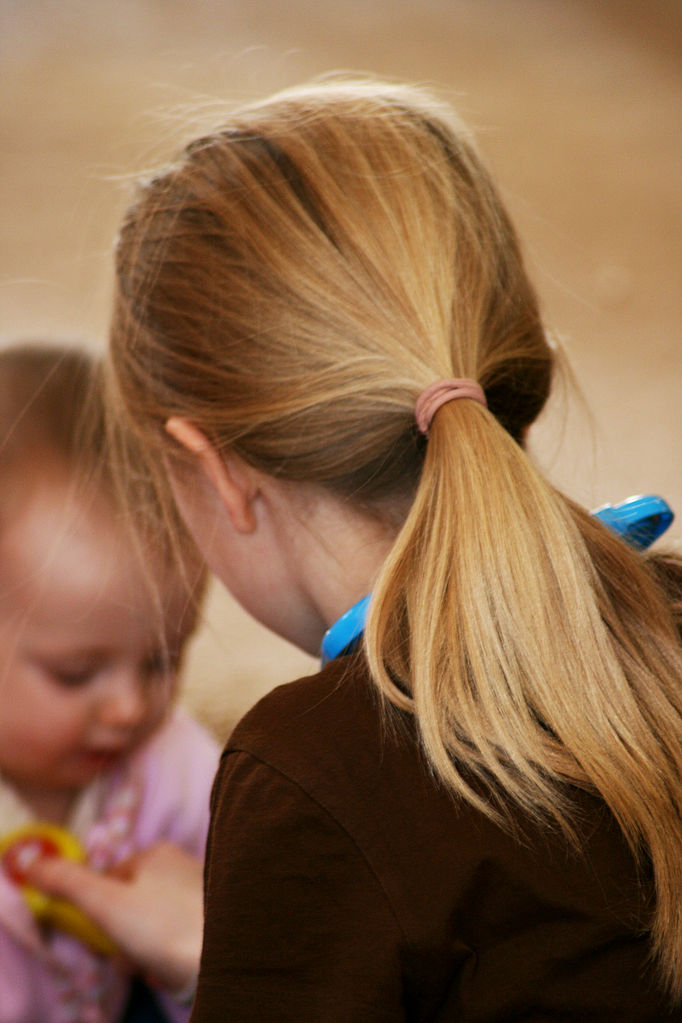 Ray - Well, the award was given to two separate groups. The first, myself in collaboration with Patrick Warren a Research Scientist at Unilever Research and Robin Ball, Physicist at the University of Warwick for explaining the shape of a ponytail. And the second half of the prize went to Professor Joe Keller at Stanford University who explained the swing of a ponytail.
Ray - Well, the award was given to two separate groups. The first, myself in collaboration with Patrick Warren a Research Scientist at Unilever Research and Robin Ball, Physicist at the University of Warwick for explaining the shape of a ponytail. And the second half of the prize went to Professor Joe Keller at Stanford University who explained the swing of a ponytail.
Chris - Why? I mean, is this a big problem? It must be of someone like you who's working on it.
Ray - Well, the genesis of half of the prize work is really at the Unilever research labs in the UK. As you know, Unilever is a global manufacturer of personal care products including shampoos and conditioners. And for obvious reasons therefore, they have great interest in the properties of hair and for a number of years, scientists including Patrick at Unilever had been trying to understand difficult problems involving say, the tangling of hair and in general, understanding the properties of bundles of hair as in a ponytail. And they reached out to me several years ago to join their team to help them solve these kinds of problems. Now I have to say, when I was first contacted by them, just like with the Ig Nobel Prize, I first laughed hilariously. I actually thought this was a Nigerian email scam or something like that, but I simply begun to realise that there was very interesting physics there and on my first visit to Unilever, a bunch of us were sitting around the table and they were explaining to me these scientific questions they were after. And we were given what are called hair swatches which are commercial bundles of hair that are used to test shampoo and conditioner. They're about 25 centimetres long, they have about 10,000 hairs and they're clamped at the top, and so in fact, if you hold them vertically, it looks like a ponytail. And in trying to figure out how to get into this project, there was understanding the properties of large numbers of hairs, we realised that actually, the shape of the ponytail was the right testing ground. That is, if we couldn't solve that problem and understand something that seems as simple as that then we couldn't go any further. So, we set ourselves the task of trying to explain the shape of a ponytail.
Chris - Is it tricky? Because when you're dealing with a ponytail and you have lots of individual hairs and they all have their own behaviour as a material, and they're all interacting with each other which means that there's not just one type of behaviour, the individual hair. It's the behaviour and how that behaviour influences the behaviour of all the other components in the ponytail.
Ray - Exactly, so we now understand and historically, much of this was understood as well, but there are at least 3 main features that matter for this problem. The first two are easy. Hair has elasticity. It resist bending and so, it tends to remain as straight as it is isolated. The hair also has weight, so gravity pulls it down and that would tend to make a collection of hairs just hang vertically. But most importantly, hair has random curvatures or meandering and it's accounting for that. And as you said, this is a problem involving large numbers of individual and distinct interacting objects, and that's where the difficulty lies in the theory. And so, we borrowed some tricks from other areas in physics, in particular, the study of fluids and the study of electronic systems where there's the notion that all of these complicated randomness could somehow be accounted for, if one knew just a few average quantities of the hair bundle. That is, instead of keeping track of 10,000 hairs, we'll just keep track of say, the local orientation of the filaments in the bundle and just the local concentration of them, the number of per unit volume. And so, we formulated a theory using that idea, that the effects of the randomness with some of yet unknown function of these quantities. And after a lot of crank-turning, theoretically, we came up with an expression, which we called the ponytail shape equation
Chris - The hair comes in lots of different flavours, doesn't it? Or at least you've got people who have Chinese hair which tends to be quite different in characteristics than people who are say, blonde and have that very fine wispy hair like my son for example. So, does the equation have a component or parameter that accounts for that ethnicity?
Ray - Exactly. It turns out that this pressure, the magnitude of this pressure and the scale of radius of the ponytail at which the pressure disappears is very crucially dependent on the average squared curvature of the filaments and their stiffness. So, it's basically like a spring. Ifyou have a curly piece of hair and you would flatten it between two sheets, you'll have to do work to compress it. And so, the more curly the hair, the more work you have to do, the greater the pressure pushing out. So in principle, there's a way of sort of cataloguing different types of hair by the pressure with which they push out of a bundle.
Chris - Does that mean then that now, if you take that equation, you can model hair much more accurately? And so, computer games designers, people making Hollywood movies where they don't want to pay extras, they can pay a computer instead who can make much more lifelike and realistic renditions of hair, which I understand has always been a major headache right now.
Ray - It has been a major headache, absolutely, and there are lots of groups that have made wonderful progress on this including a particular interesting work in Paris. But the incorporation of this bundle effect is something which we think could be an exciting new twist on this that could actually make things much more realistic. And we hope in the future, to be able to think about that, as well as about what might be called the hairodynamics problem. That is how hair interacts with hair flow as in when you wave your head or you're in the wind.
Chris - So how did this go down in front of the Ig Nobel ceremony? You have about 1 ½ minutes to tell the story, didn't you?
Ray - Yes. Well in fact, since there were two parts of the prize, we just had 30 seconds. So, we distilled it down to the essence. In fact, we joked about this on 2012, the search for understanding deep properties of the universe was partially successful in the sense that the Higgs Boson appears to be found and of course, that's supposed to be the explanation for the origin of mass, and we have to come up with an explanation for the origin of volume.
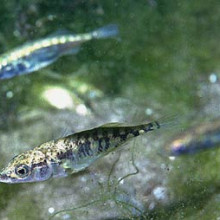
29:56 - Shy Sticklebacks & Social Structure - Planet Earth Online
Shy Sticklebacks & Social Structure - Planet Earth Online
with Dr Andrew King, Royal Veterinary College
If you've ever walked with hundreds of other people to a football match - or the recent Olympics perhaps - then you will have been part of a group dynamic. Studying group behaviour has a number of important applications so Planet Earth podcast presenter Richard Hollingham joined behavioural ecologist Dr Andrew King at the Royal Veterinary College in Hertfordshire. They met inside one of the rooms that is part of the Structure and Motion laboratory. It was filled with tanks of stickleback fish to find out how personality and group decisions as a group, such as in shoals, tell us more than you ever thought possible.
Andrew - We take individual fish and we put them in this arena, which we have to our left here and this arena has individual tanks with lanes in it in which we can test how bold each fish is. So, the tank has a very scary shallow end and a very friendly deeper end and what the fish tend to do is stay in the safe end. The number of occasions and how long they spend at the scary end gives us an indication of how bold those fish are. And so what we then do is we get an order of how bold fish are from 1 to 100, for example.
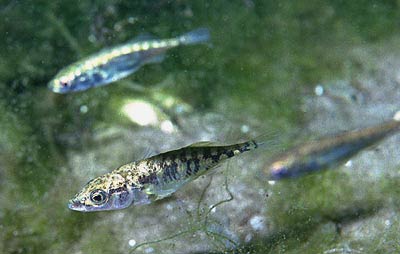 Richard - Each one is, what, about, 3 or 4 centimetres along, lovely glinting shiny colour. They have different personalities?
Richard - Each one is, what, about, 3 or 4 centimetres along, lovely glinting shiny colour. They have different personalities?
Andrew - Yes, so what we find is that when we put them in these lanes in which we're looking at how much exploration they do, that they do vary considerably according to the identity of the fish. The important thing is that this variability is consistent within an individual. So fish A will be bold on day 1 and if we retest him one week later he will also be bold on day 7, and the great thing is that we've found that when we collect the fish from the tank, the order which we catch the fish correlates with their boldness score in the tank. So, if they are caught first they are extremely bold in the tank and if they're caught last they don't go anywhere in the tank, they are extremely shy, so it's a really nice indication that what we're measuring is something real.
Richard - So you've got these categories of, quite scared, quite bold?
Andrew - Yeah, it's called a bold/shy continuance so it varies according to the fish. Once we have that we put them in these tanks which we have to our right-hand side.
Richard - So these are much smaller individual tanks all numbered in a rack of shelves...
Andrew - Each tank is in the same water system, the same filtration, and each fish stays in here during the behavioural tests and we feed each fish so we know every fish gets the same amount of food and we control their social environment so they can see each other, they are very social animals so we don't want to deprive them of that, so they can see one another and we rotate them so they don't get used to being next to certain neighbours. What this means then is that we have individual fish that we know how bold they are, we know how much food they've been getting, we know they haven't been interacting with any males or females recently and we combine these fish into different categories of bold or shy individuals and we make up shoals composed of mostly shy, mostly bold and a mix of the above. And what the idea is to try and test what combination of these different personality types creates a "winning team" if you like. What combination of these personalities creates the best shoal?
Richard - So, a shoal might consist of all bold, or all a little scared or a mix of the two?
Andrew - Yes, exactly. And in the wild what we find if you try and catch a population - it's hard to catch a whole population, but if you catch a sample - then what you tend to find is that you get lots of shy individuals and relatively few bold individuals. So what we try and do is try and work out why on Earth that combination would be a crucial or optimal combination of fish to have. So we make these different shoals and we give them tests like try and find food in this new novel environment or try and avoid this predator and then we see which of these different shoals perform best.
Richard - Now is this really just to understand shoaling and understand the process by which fish move as a mass?
Andrew - One aim is to understand exactly those individual shoals and what rules they are using, how do they follow fish - are they following all their neighbours, one, two, four, five neighbours? That relates to a lot of working flocking animals and shoaling fish and flocking birds. But the other thing that we want to try and work out is if animals have this personality why on Earth is it adaptive, why should you vary? So this is trying to get to the grips of it might be beneficial when you combine all these individuals, individuals do better by paring up with those which are different from them.
Richard - Why do this - I mean it's interesting - but what's the point of it?
Andrew - From a pure behavioural ecology perspective, we wanted to understand the evolution of these personality differences. But from a broader perspective I also do work with human groups and different ungulates and primates as well. And to try and work out what combination of personality types and characteristics make a winning team is of interest for economists, basically anyone who is interested in information-sharing group societies. Maybe it's a little bit of a jump but it works surprisingly well across these species.
Richard - That's incredible that there are basic rules or this suggests that there are basic rules underlying the way fish or higher animals or us interact.
Andrew - Definitely and one of the things that keeps emerging from my research is leadership and followership - there are two social roles that these individuals adopt and there are surprisingly common principles across many different species from fish to birds to humans to ants.
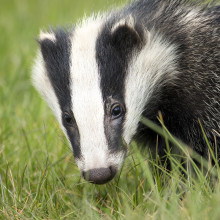
What is the link between badgers and bovine TB?
Kat - Okay, this is a very complicated and very emotive issue, and it mixes science, cute furry animals, commercial interest and politics, and with this kind of complicated issue there's obviously no really simple answer to it. Now, the UK government are proposing a badger cull in England that could see as many as 100,000 badgers killed and that's a third of the national population. So, that's quite a big thing and not great if you're a badger or someone who loves badgers. Now, on the farmers side, they're arguing that the wild badger populations harbour the bacteria responsible for bovine TB, and this is a germ called Mycobacterium tuberculosis. It's very closely related to human TB and it can also cause TB in humans although it's a very low risk. You really have to get very close to cows with it. But it is a big problem for cattle farmers and it's responsible for a huge number of animals having to be destroyed every year. There is some evidence that it can get into milk, but the thing is, if you pasteurise milk, then that's absolutely fine and there's no risk to consumers. But they say that badgers do spread the TB germs around through the badger's urine and faeces and cows only need to pick up a relatively small dose of bacteria to be infected. So in theory, getting rid of badgers would stop them bringing TB onto farms and it would protect cows, it would protect the farmer's interests, and the money that it costs to control TB, and all that kind of stuff, and that would be great.
Now on the other hand, there's a lot of people who say that a cull would not be effective. There was a big randomised trial of badger culling and it showed that culling is only really going to make a small difference to TB infections in cows and it might actually make the problem worse. Because if you start disturbing badgers and trying to kill them, they'll scurry away into other locations. And also, if you do manage to kill a lot of them, then you have all these empty badger sets that could potentially be infected and then new badgers will come in, start interacting with the population there, and it's just going to spread, and potentially, it could get worse. There's also no way of telling whether a random badger has TB or not, so they're proposing that you just shoot badgers on sight. So the problem is, you're not selecting between healthy badgers and diseased badgers. So that's a problem and there's also a public risk of having people out at night with shotguns. Again, it's not a great idea. The only way that it could work to do a cull would be, you'd have to kill a huge number of badgers in a very big area or at least 150 square kilometres in a very short time. So that's at least in two weeks, in less than two weeks. And this is going to be very difficult, very expensive. It's not going to completely reduce TB outbreaks anyway in cows and it would cost farmers probably more than they would lose form bovine TB. It's also worth noting that other animals can actually spread bovine TB and it includes deer and foxes, so it's a bit of an unwinnable battle.
Now, where do we go from here? How can we help farmers? How can we help badgers? There's an argument to say that actual better farming practices could do a lot to curb infection. So, controls on moving cattle around, doing more to keep badgers out of farms and out of the food sheds where they store cow food, and actually, there's a lot of work going on into vaccinating badgers. There's currently an injectable vaccine. It's obviously quite hard to trap and inject quite a lot of badgers, but there are proposals that really should be worked on an oral vaccine for badgers so you could leave out in their food, and that would probably be a really good way forward without having to kill lots of them.
How are memories stored?
Ginny - Memory is a really interesting area because it isn't just one distinct thing. We have lots of different types of memory. So, a distinction that most people probably know about is short term versus long term memory. So, your short term memory allows you to remember around 7 things for a short time. Say, you look up a phone number, you're trying to remember it. You'll tend to repeat it to yourself and this is actually how the brain works for your short term memory. It's basically repeating the thing over and over again, so I'm sure everyone's had the experience of looking up a mobile number, getting distracted, and completely forgetting it, and having to look it up again. And that's because your short term memory can only store these things as it's repeating it to itself basically.
Chris - But what's actually happening when I'm going from that repetition where I know I know it and don't - whatever you do, say any numbers while I'm trying to remember the phone number because they will interfere - between that and then I know it's in my brain and I can call it up whenever I want to. What's actually physically happening?
Ginny - So, that's the change from short term memory to long term memory and that involves an area of the brain called the hippocampus which consolidates your memories and takes them from the short term memory to the long term memory, and that's generally done by repetition. We think that basically, you're forming new synaptic connections. So, you're actually connecting new cells in your brain and the more times you go over this same piece of information, the stronger that connection becomes, and the more likely it is to be stored permanently. And it actually links with what we were talking about earlier when we were talking about reconsolidation. So you can only reconsolidate a memory once it's being consolidated for the first time. And the more times you reconsolidate it, the stronger it becomes if it's the same memory, and that's how you can influence it if you change it to that.
Chris - So practice does make perfect.
Ginny - Exactly. It's all about repetition, repetition, repetition.
Why does my voice sound different in my head?
Chris - The reason is quite simple really. What you have when you have sound coming in to your ears, when I'm listening to someone else speaking to me, I'm just getting sound vibrations in the air coming through the air. They go into my ear canal, the bit you can stick your fingers in on either side of your head. They hit your ear drum and the ear drum is a flat sheet of tissue which when the air vibrations hit it, it makes the ear drum vibrate in sympathy with the vibrations in the air.
Those vibrations are then transmitted via a series of 3 tiny bones into what's called the cochlea. The cochlea is the inner ear and in there is a structure which has a long membrane which is fat at one end and thin at the other. Because its thickness changes, its stiffness changes along its length and this means that some bits of it resonate at some frequencies and other bits resonate at other frequencies. And sticking into it are structures called hair cells and these hair cells will be vibrated more or less according to which bits of that structure are vibrating. And the vibrations transmitted into the hair cells make the hair cells become electrically active and when the cells are electrically active, they fire off impulses into what's called the auditory nerve. That then sends a signal down into the brain stem and then it gets projected onto the part of the brain that decodes your ability to hear. So, when you are listening to sounds coming from outside, that's what's happening, but when you're actually making sounds yourself, in other words, your vocal cords are opening and closing and creating puffs of air that themselves create resonances inside your throat and your mouth. Some of those resonances are going to be transmitted into the bones of your head and your skull. The bones will conduct the sound also to the cochlea, so the cochlea will also get sounds from inside your head.
So when you speak, you hear both the sound coming through the air and you also hear the sound of your bones vibrating. And that is why, when you speak yourself, you think you sound different to what you sound like when people play something back if having recorded you earlier, because what you're actually hearing is the two sounds superimposed. When you hear the recording made outside your head, that's the pure sound of what you really sound like and yup! Believe you me, it's pretty painful to listen to because it's very much a sort of self-conscious thing. Ginny.
Ginny - One of the other Ig Nobel Prizes, we spoke to one of the Ig Nobel Prize winners earlier, were actually a pair of Japanese scientists (inventors really) who invented the device they called the speech jammer which actually played your own voice back at you at just a few milliseconds delay, I believe, and it's so disrupting to hear your own voice back with that slight delay that it basically shuts people up if they're talking too much.
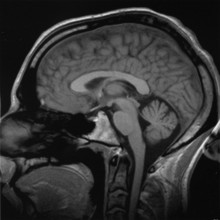
52:37 - Can I think myself thin?
Can I think myself thin?
David - I'm David Attwell and I work at University College London where my lab studies brain energy use. We're used to the idea of doing exercise to consume energy and reduce body weight, but the brain also uses energy to power our thinking. So, can we use up as much energy by thinking hard as we can by going to the gym? Given the epidemic of obesity in the population, should we be encouraging people to do, let's say, math problems rather than going running?
Information is coded in the brain as electrical signals. These are generated by the entry of positively charged ions, sodium and calcium, into the nerve cells. These ions then need to pumped out of the cells again and it's this pumping that uses most brain energy which is provided as oxygen and glucose in the blood. In fact, when you're sitting quietly, the brain consumes about 20% of the body's energy, say about 20 watts. So, about 20% of the food you eat goes to power your thinking if you do no exercise. Now, if you change what you're thinking about, there are changes of brain energy use, but these are small because some nerve cells increase their signalling while others decrease their signalling. As a result, brain energy use changes by only a few percent, perhaps a few watts. In contrast, when you exercise energetically, the high energy use of muscles can double the body's energy use, increasing it by over 100 watts. So the bottom line is, that the energy use associated with thinking can't be dramatically increased to reduce body weight and there's just no alternative to keeping on doing that physical exercise. Hannah - But is there any other way that we can cleverly use our brains to think ourselves thin? We weigh up the options with Professor of Ingestive Behaviour Marion Hetherington from Leeds University...
Marion - Thoughts can guide behaviour so that you can avoid temptation and so that you can guide your behaviour towards a healthier choice. Dieters often have to amend their behaviour in order to avoid temptation and to resist eating foods which are not permitted. Therefore, thinking yourself thin is not enough. You also have to have cues to remind you to stay on your diet goal. Thinking yourself thin, therefore, is really planning ahead and having a strategy and following it.










Comments
Add a comment